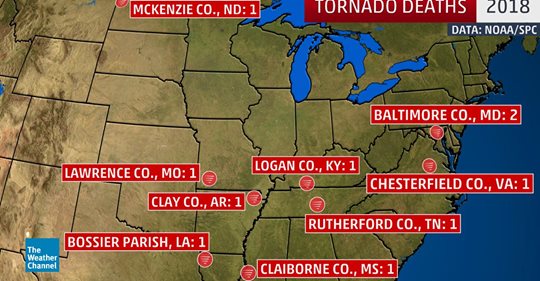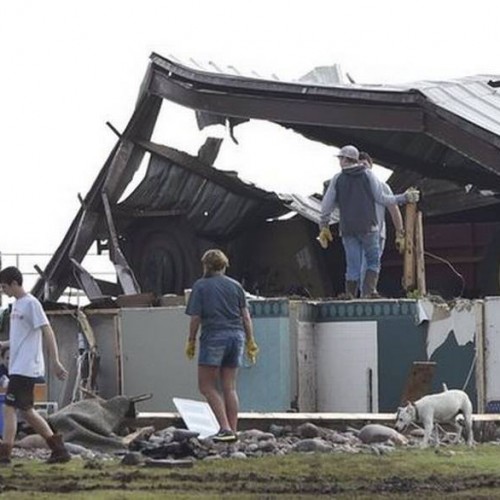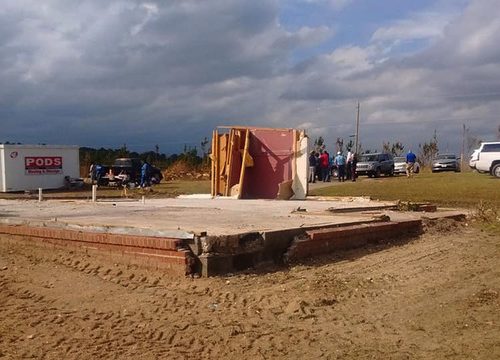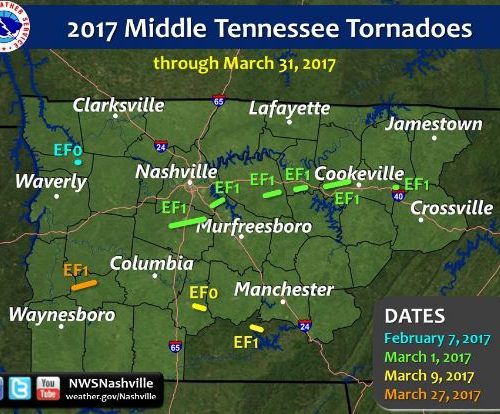Tornadoes have been responsible for 10 deaths in the United States in 2018, which is lower than the final number of tornado-related deaths in any year dating to 1875.
The current record stands at 12 such deaths in 1912, followed by 15 in 1986, according to data from NOAA’s National Severe Storms Laboratory.
Nine tornadoes this year have been responsible for the 10 deaths, most recently an EF1-rated twister that killed one person Dec. 1 in Lawrence County, Missouri.
Five of the killer tornadoes were rated EF2 while the other four were rated EF1, according to data from NOAA’s Storm Prediction Center (SPC).
Although tornadoes of any intensity can be deadly, higher-end-rated twisters (EF3 to EF5) have historically been responsible for the bulk of deaths from U.S. tornadoes. About 83 percent of the deaths from 2000 through 2013 were from tornadoes rated EF3 or stronger, according to data from Dr. Greg Forbes of The Weather Channel.
In 2018, only 10 EF3 tornadoes had been confirmed by National Weather Service storm surveys as of Dec. 4. No tornadoes have reached EF4 or EF5 intensity this year. The U.S. averages about 30 EF3 or stronger twisters each year.
North America’s strongest tornado of 2018 so far has been in Canada, where an EF4 tornado touched down in southern Manitoba on Aug. 10.
In an average year, based on 30 years of data from 1987 to 2016, 69 people are killed by tornadoes in the U.S., according to the NWS.
2017 and 2016 were also well below that average, with 35 and 18 Americans, respectively, killed by twisters. In fact, the last year with an average or above-average number of tornado-related deaths was 2012, with 69 fatalities.
The main reason 2018 is on pace to finish with the fewest tornado deaths in records dating to 1875 is the overall lack of tornadoes this year.
The jet stream pattern was not favorable for tornadic activity last spring, when the ingredients for severe weather typically begin to come together. A southward dip in the jet stream – an upper-level trough of low pressure – persistently set up across the central and eastern states and dug all the way into the Deep South.
Moisture was trapped near the Gulf Coast in that setup, unable to surge northward into the Midwest and Plains. Additionally, that pattern prevented jet stream disturbances from punching out of the Rockies and into the Plains – a common severe weather setup in the spring months.
While that pattern wasn’t as dominant in May, it was still present at times, keeping the month’s tornado count far below average.
In fact, for only the second time on record, the two most active months for tornadoes of May and June passed without claiming any lives in the U.S.
A preliminary 1,132 tornado reports had been tallied by the NWS and SPC through Dec. 3; an average year would have 1,361 reported tornadoes by that date.
December is the least-active month for tornadoes, averaging just 31 per year, so there’s a good chance 2018 will finish as the least-deadly year for tornadoes.
This December has already reached that average number of twisters due in large part to a tornado outbreak in central and southern Illinois, which spawned at least 26 tornadoes on Dec. 1. That was a record for the most tornadoes in any Illinois December outbreak, according to the NWS office in Lincoln, Illinois.
by Brian Donegan (2018, Dec 3) weather.com





